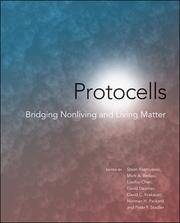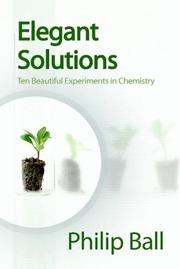Protocells: Bridging Nonliving and Living Matter - ISBN 0262182688 - MIT Press 2008
Skimming
- first pass with titles and conclusions
- three functional components (Figure I.1 in the Introduction

courtesy of the FLinT, Center for Fundamental Living Technology, University of Southern Denmark)
- metabolism
- container
- genes
- virtual models
- software
- cognitive framework
- chemoton
- Lattice artificial chemistry
- Lattice molecular automaton
- see the ending glossary (p?)
- (not in the book) Conductance-based models seem to be pretty related too
- fractal pattern of ontogenic growth
- 8 - Constructive Approach to Protocells: Theory and Experiments
- 8.3 Theoretical Issue 2: Origin of Recursive Production and Evolvability
- seems to have nearly no occurance of "cognition" but plenty of "recognition"
- probably highlighting the importance of the membrane
- still key to Stewart's life=cognition (never mentioned in the book)
- enaction by Varela/Maturana
- chapters referencing Maturana, H., & Varela, F. (1980). Autopoiesis and cognition: The realization of the living
- 3 - Semisynthetic Minimal Cells
- 4 - A Roadmap to Protocells
- 9 - Origin of Life and Lattice Artificial Chemistry
- 12 - Evolutionary Microfluidic Complementation Toward Artificial Cells
- 22 - Gantiís Chemoton Model and Life Criteria
- 20 - Core Metabolism as a Self-Organized System
- "Metabolism of protocells should be based on pathways with the lowest thresholds to autocatalysis."
- "We suggest that the order of life should be understood as a statistical phenomenon, from the smallest to the largest structures, and from the earliest chemical stages to the persistence of modern forms."
- 21 - Energetics, Energy Flow, and Scaling in Life
- 21.4 - Energy and Information (p469)
- 24 - Nonlinear Chemical Dynamics and the Origin of Life
- Conclusion, 2, "The Darwinian evolution with its exponential growth occurs once one has the capacity for self-catalysis, or perhaps more accurately, self-driven reproduction, with evolution occurring as a result of occasional errors in the self-reproduction process, with the defective product still having the ability to self-reproduce. Competition for resources coupled with the environment itself will, of course, provide the subsequent selection." (p560)
Overall questions and remarks
- life a self-sustaining process relying on sub-processes and mainly homeostasis
See also
- my notes on The Things We Do: Using the Lessons of Bernard and Darwin to Understand the What, How, and Why of Our Behavior]] by Gary Cziko
- The EvoGrid: The Evolution Technology Grid by Bruce Damer et al.
- Did evolution come before life? by Bob Holmes, New Scientist 2008
- Shapes and Self-Movement in Protocell Systems by Keisuke Suzuki and Takashi Ikegami, Artificial Life Winter 2009
- Evolvable Self-Reproducing Cells in a Two-Dimensional Artificial Chemistry by Tim J. Hutton, Artificial Life Winter 2007
- Was our oldest ancestor a proton-powered rock? by Nick Lane, New Scientist October 2009
- A líorigine de la vie, La marche des sciences, France Culture December 2009
- Alife XII 2010 at the Center for Fundamental Living Technology (FLinT) at University of Southern Denmark (SDU)
- the emerging field of systems chemistry
- Venterís Successes in Creating Synthetic Life by Aaron Saenz, Singularity Hub February 2010
- Pine Group Web Pages Department of Physics and Center for Soft Matter Research at New York University
- Researchers start up cell with synthetic genome Nature News May 2010
- Earliest sense is for monastic rooms, then prison rooms (1722). Used in 14c., figuratively, of brain "compartments;" used in biology 17c. of various cavities Cell according to the Online Etymology Dictionary
- Protocells by Rachel Armstrong
- Wikipedia:Hypercycle (chemistry)
 by Wikipedia:Manfred Eigen
by Wikipedia:Manfred Eigen Wikipedia:Peter Schuster
Wikipedia:Peter Schuster
- Wikipedia:Quasispecies model

- The Origins of Life edited By David Deamer and Jack W. Szostak, Cold Spring Harbor Laboratory Press 2010
Categories
Back to the Menu
Other read books linking to the Protocells page :
Back to the Menu
 Fabien Benetou's PIM
Fabien Benetou's PIM









